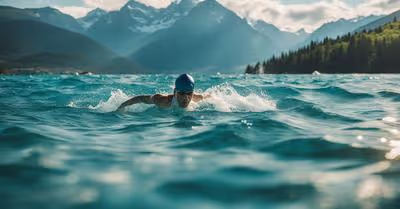
Key Takeaways
- Cross-lake swimming offers exciting challenges for serious swimmers.
- Races cover a variety of conditions including cold temperatures and vast distances.
- These events test swimmers' endurance and resilience in beautiful, natural settings.
Ready for a monumental challenge?
Cross-lake swimming races are on the rise!
Swimmers like you are looking for ways to test their endurance, and what better way than conquering some of the most notoriously difficult lakes out there?
From the frigid waters of Lake Superior to the vast expanse of Lake Powell, these aquatic playgrounds are not for the faint of heart.
Set on pushing your limits?
The thrills of cross-lake swimming races await.
Across various states, lakes pose a mix of chilly temperatures, unpredictable weather, and distances that only the bravest dare to face.
Every stroke in these treacherous waters is a story of courage and determination, a testament to the resilience required to conquer nature's water-filled giants.
Now, if you're wondering whether this challenge is something you can handle, rest assured you're in safe hands.
We're delving into experiences across America’s most challenging lakes, equipped with the facts and figures to feed your adventurous spirit.
From the serene yet deceiving depths of Lake Tahoe to the ever-changing conditions of Lake Erie, get ready to be immersed in the world of extreme open-water swimming!
Lake Tahoe (California/Nevada)

Hey swim enthusiast, have you ever dreamt of gliding through the pristine waters of one of North America's largest lakes?
Let's talk about Lake Tahoe, your potential aquatic racetrack!
Nestled between California and Nevada, this mountain-bordered jewel stretches a whopping 21 miles at its longest.
Imagine diving into those cool, clear waters and looking up at the Sierra Nevada mountains—it's truly a swimmer's paradise.
Have you thought about the altitude?
Lake Tahoe sits at about 6,225 feet above sea level.
That means the air's thinner up there, making any cross-lake swim a test of endurance and strength.
It's not just about the distance; it's about how your body adapts to less oxygen while pushing through each stroke.
Wondering about the temperature?
Get ready to brace yourself.
Even on a warm day, the water can be quite chilly, providing an extra layer of challenge as you pace yourself from shore to distant shore.
And don't get me started on the weather—it's famously unpredictable here.
One minute the sun is your cheerleader, and the next, you could be faced with a surprise gust of wind stirring up the surface.
So, what makes Tahoe stand out for your cross-lake ambitions?
Check this out:
- Length: A massive 21 miles
- Elevation: Sky-high at 6,225 feet
- Water: Crystal clear but cold
- Challenge: High altitude, temperature, and weather changes
Your race here won't just be a physical competition; it's a dance with nature's unpredictability.
But hey, that's part of the thrill, right?
Gear up, train smart, and Tahoe might just be the most memorable swim of your life.
Ready to make some waves?
Lake Superior (Minnesota/Wisconsin/Michigan)
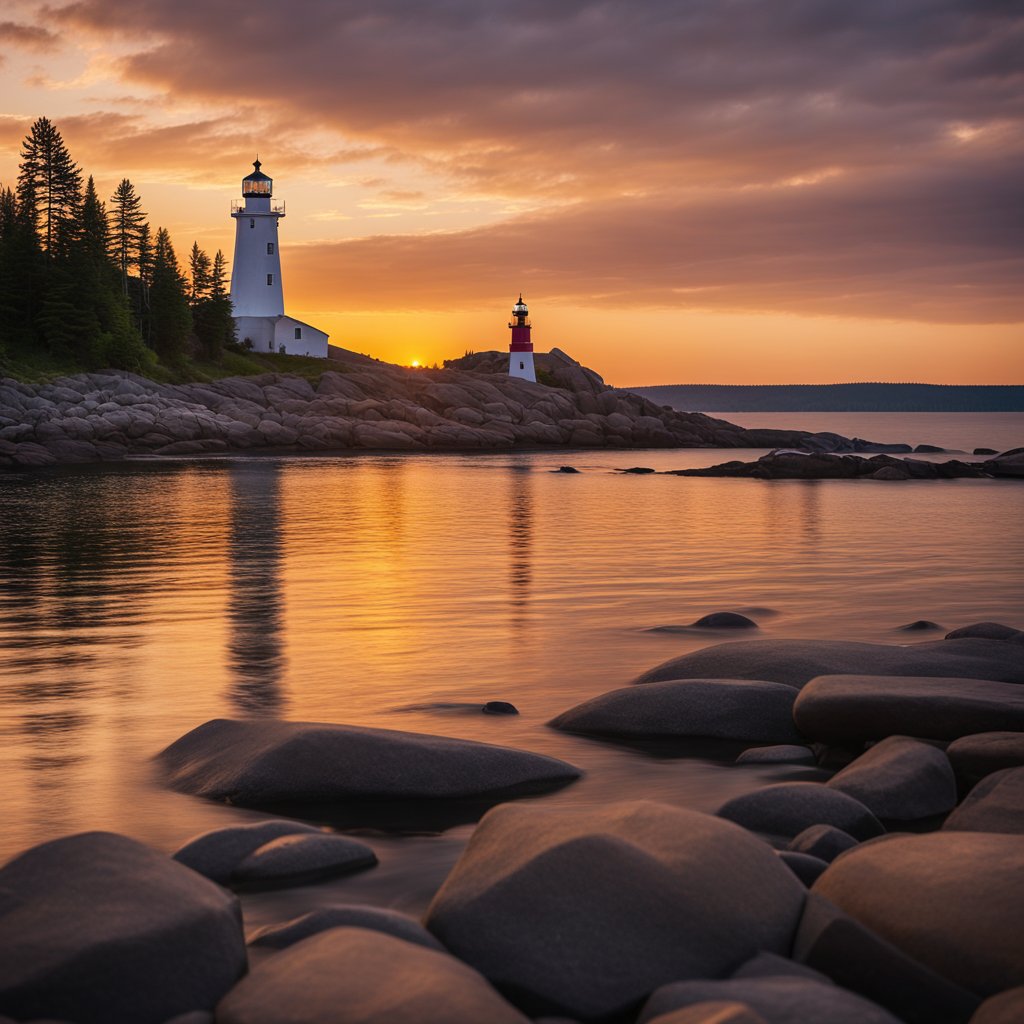
Ever thought of swimming across a lake so big you could mistake it for an ocean?
Welcome to Lake Superior, the titan of the Great Lakes.
It's not just the largest; it can be rather moody too—imagine chilly waters, currents with a mind of their own, and weather that switches mood faster than you can say "brrr!".
Now, let's talk temperature.
Lake Superior is notoriously cold, with water temperatures that can hover around a brisk 40°F (4°C).
Not the kind that merely nibbles at your toes, but the kind that demands respect.
And that's not all - with its vast expanse, the lake challenges swimmers with distance as well as frigid conditions.
The currents?
Oh, they're quite the masters of surprise, often making you question whether you're moving forward or just a very cold version of running in place.
This isn't a paddle in the park; it's a test of endurance and skill.
Let's not forget about the weather - it's like a box of chocolates over there, you never know what you're gonna get.
One moment it's sunny, and the next, it's as if the sky is having a bit of a tantrum.
But that unpredictability is exactly what makes crossing Lake Superior a badge of honor among swimmers.
And if you need proof of how challenging it is, get this: There was a fellow who swam nearly 60 miles in 60 hours, setting a world distance record for a non-stop, unassisted swim.
That's dedication!
So, in case you're jotting down your swimming bucket list, a cross-lake race on Lake Superior is the ultimate challenge—frightening?
A tad, but oh so exhilarating!
Lake Michigan (Michigan/Illinois/Wisconsin/Indiana)

Have you ever imagined yourself slicing through the waters of one of the largest lakes in the U.S.?
Lake Michigan, my adventurous friends, is not just a lake; it's a monster of a challenge for swimmers like you.
It's huge, with a shoreline that touches four states—Michigan, Illinois, Wisconsin, and Indiana.
The mere size of it is enough to pump up your adrenaline, isn't it?
Now, don't be fooled by its beauty; this lake can be quite the beast when you’re attempting to cross it.
You're looking at a body of water with 307 miles from its northernmost point to the southern tip.
And here's a fun fact: Lake Michigan's coastline is over 1,600 miles long—if you're feeling brave enough to tackle it inch by inch.
Why is it challenging?
- Strong currents: You'll need to prepare for a battle with currents that can sweep even the seasoned swimmers off their course.
- Waves: The waves here don't play nice. They can tower up, making it feel like you're in the ocean.
- Weather conditions: Lake Michigan’s mood swings with the weather. One moment it's calm, and the next, you could be swimming in a tempest.
Crossing Lake Michigan is not a race for the faint of heart.
It's a testament to endurance and strength.
You'll be joining an elite group who've conquered its waters, and isn't that something to aim for?
Remember, this lake borders Illinois, where Lake Michigan's current Low Water Datum (LWD) level is 1.90 feet (with a high LWD of 4.92 feet).
So when you take on this challenge, embrace the unpredictability, respect the power of nature, and most importantly, stay safe.
Train smart, and who knows, you might just become a part of Lake Michigan's legendary crossings!
Lake Champlain (Vermont/New York)
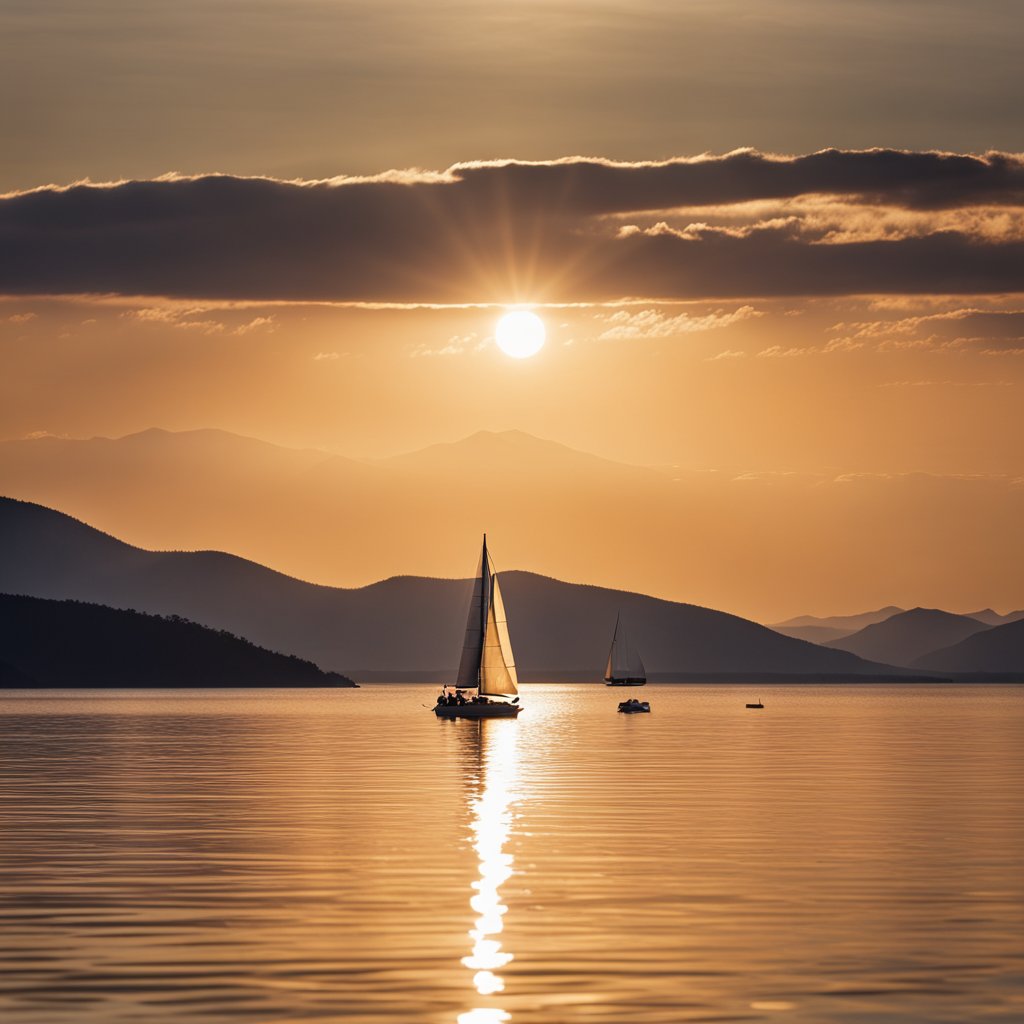
Hey there, water warrior!
Are you ready to tackle the legendary Lake Champlain with its sprawling 25-mile length?
Trust me, crossing this beast is not for the faint-hearted.
You'll be navigating cold waters that can chill you to the bone, with unexpected strong winds that might make you wonder why you didn't take up chess instead.
But wait, there's more!
This isn't just a quick dip in the park.
The sheer distance of the race can be daunting.
Imagine conquering a marathon, but instead of running, you're swimming—now that's what I call a challenge!
Let's break it down:
- Temperature: Refreshingly cool, or let's say, thrillingly chilly.
- Winds: Capricious gales that keep things interesting.
- Distance: A whopping 25 miles, end-to-end.
Now, you might be thinking, "But surely the views must be worth it?" Absolutely!
As you power through each stroke, you'll be flanked by the scenic Adirondacks to the west and the Green Mountains to the east.
The lake runs nearly 400 feet deep in places, and it's surrounded by nature's finest, giving you something beautiful to look at while you catch your breath.
So, are you up for the challenge?
Ready to make some waves and join the ranks of cross-lake swimming legends at Lake Champlain?
Lace up your swim cap, it's time to make a splash!
Lake Erie (Ohio/Pennsylvania/New York/Michigan)
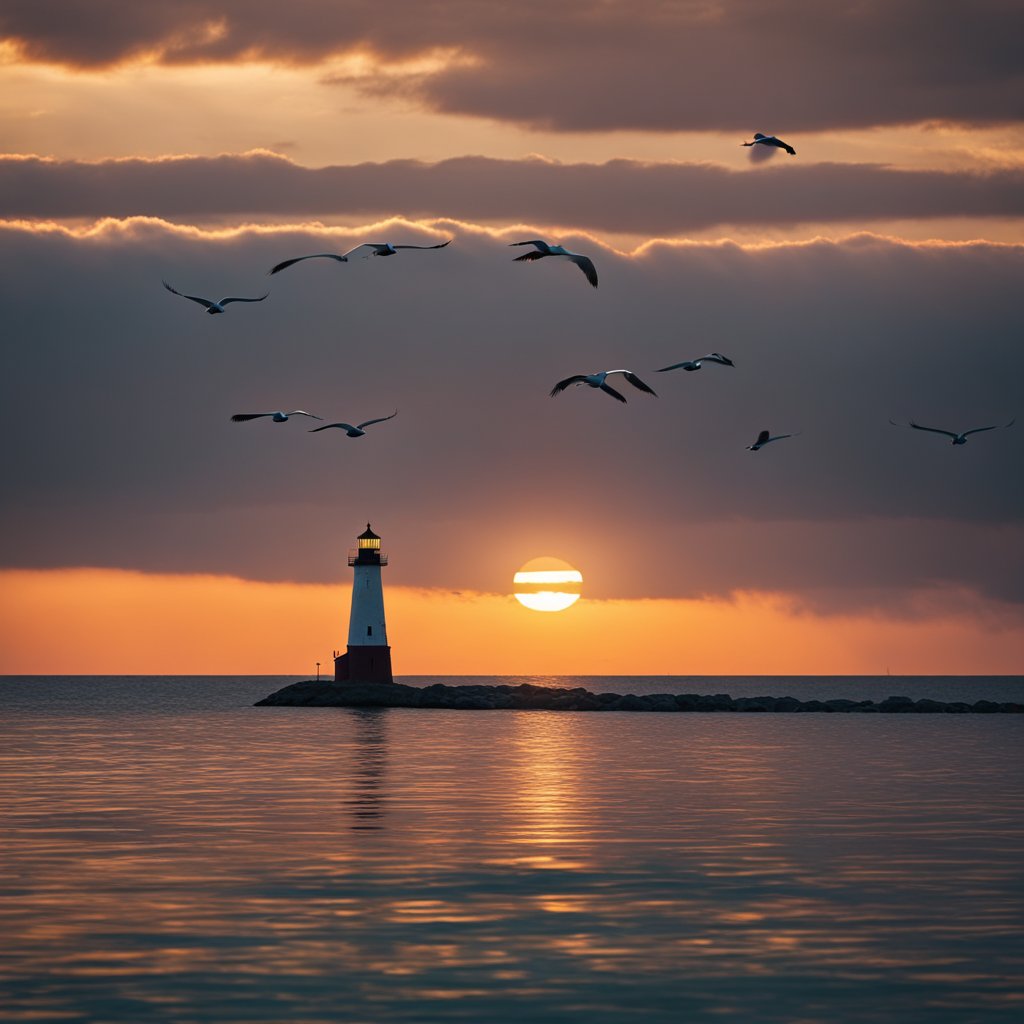
Have you ever daydreamed about swimming across one of the Great Lakes?
Let's talk about Lake Erie, a remarkable body of water that challenges seasoned swimmers with its whimsical temperament.
The lake shares its shoreline with Ohio, Pennsylvania, New York, and Michigan, and boasts a rich history with its glacial origins.
Did you know Lake Erie is the shallowest of the Great Lakes?
Its depth is a double-edged sword.
On the one hand, it warms up rather quickly in the summer, potentially offering a more pleasant swimming experience.
On the other, it's infamous for its rapidly changing weather conditions—watch out for those surprising summer storms!
Listed below are a few quick facts about Lake Erie’s characteristics:
- Average Depth: Roughly 62 feet
- Max Depth: About 210 feet
- Surface Area: 9,910 square miles
Thinking about a cross-lake swimming race?
Well, strap on your goggles, because the lake's strong currents and choppy waters are not for the faint-hearted.
And here's a fun tidbit: Lake Erie has the shortest average water residence time of all the Great Lakes.
This means the water you dip into might not stick around for long.
Isn't that something?
Lake Erie's shoreline spans to several states and even reaches up to Canada, offering a unique crossing from various points.
So, if you're aiming to add a challenging notch to your swim cap, Lake Erie might just be the adventure you're looking for.
Just remember, always respect the lake's dynamic nature and ensure you swim safely.
Happy splashing!
Lake Oahe (South Dakota)
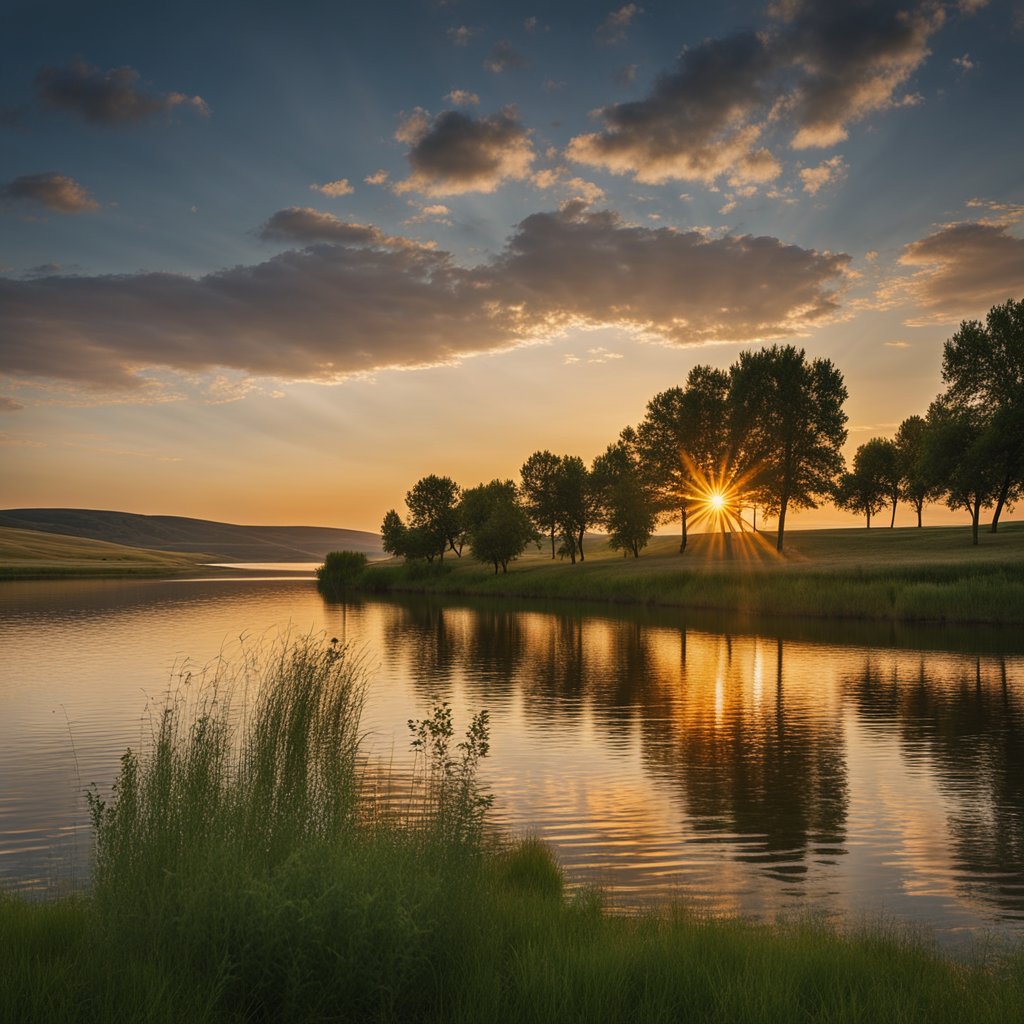
Have you ever considered a swim in Lake Oahe?
It's one heck of a challenge!
Lake Oahe isn't your average lake; we're talking about a stretch that runs from Pierre in South Dakota all the way up to Bismarck, North Dakota.
Created by the Oahe Dam back in the day (1958 to be exact), this reservoir is massive.
Fancy some numbers?
Lake Oahe spans an impressive 231 miles and boasts over 2,200 miles of shoreline.
It's a swimmer's and angler's delight, but don't let the size alone intimidate you.
When it comes to cross-lake swimming races, Oahe's got a reputation.
Why's that, you ask?
Well, those strong winds that whip up sizeable waves and the tricky currents can really put your swimming skills to the test.
But hey, who doesn't love a good challenge?
Just remember, it's not for the faint-hearted.
Did You Know?
- Lake Oahe is a top-10 ranked location for bass fishing.
- It serves as a major source of hydroelectric power.
- Conditions can be unpredictable due to the weather.
Now, if you're really looking to put your endurance to the test, the long stretches of clear water will definitely do the trick.
Just make sure to check those weather reports beforehand – the winds aren't always in your favor.
And let's talk about the aquatic residents, shall we?
We've got smallmouth bass, walleye, and even Chinook salmon swimming around.
Though those salmon can't reproduce naturally there, they are still part of what makes Oahe an angler's paradise.
All in all, if you're up for a challenging swim with a view that spans counties and states, Lake Oahe is waiting for you.
Will you take the plunge?
Lake Pend Oreille (Idaho)
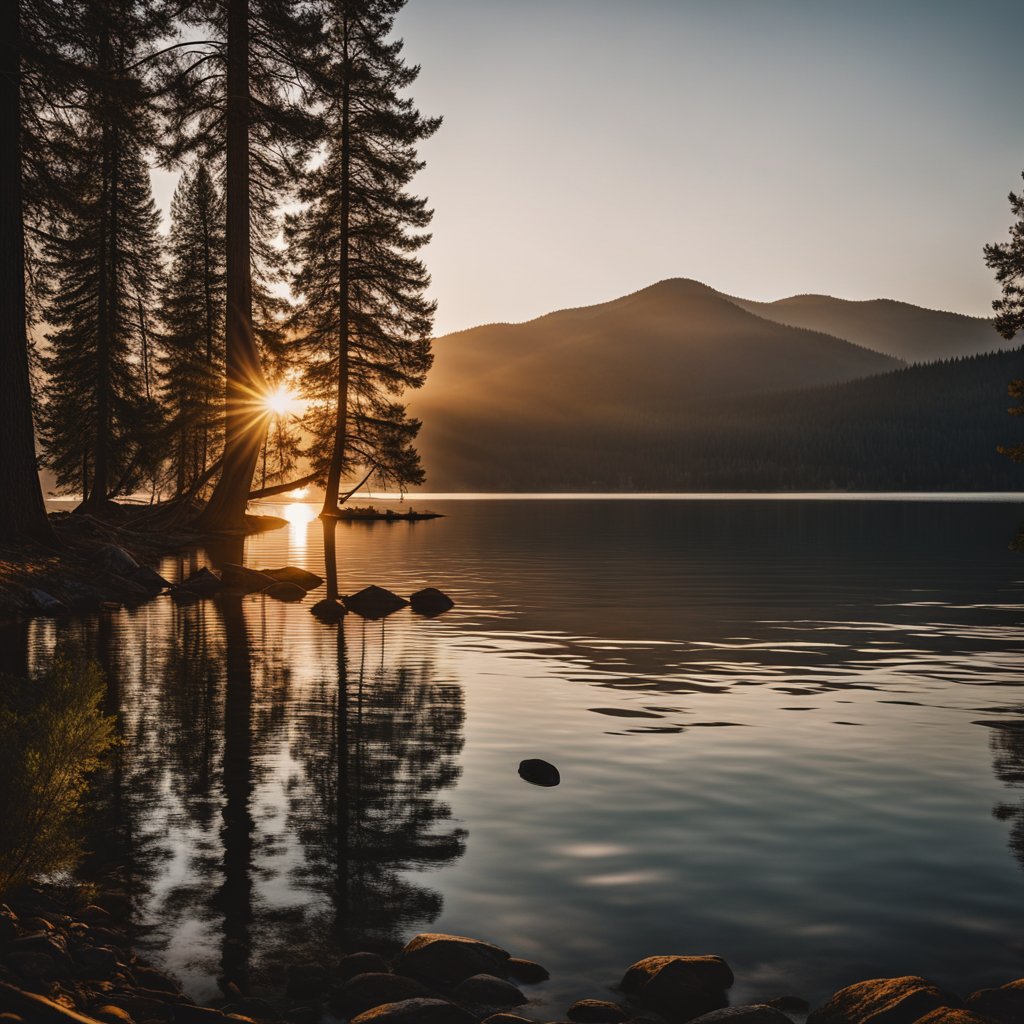
Ever fantasized about a swimming race that feels like an adventurer's quest?
Let's talk about Lake Pend Oreille in Idaho.
Imagine tackling 43 miles of pristine water.
That's right, this lake stretches out for an epic adventure and is surrounded by picturesque mountains.
Are you ready for the challenge?
Lake Pend Oreille isn't just long, it's deep—stunningly deep.
With depths reaching 1,150 feet, it's the fifth deepest in the U.S. Think about that for a second: the cold waters can really test your endurance.
Plus, with a surface area of 148 square miles, you've got a lot of space to conquer.
Here's what makes Lake Pend Oreille a swimmer's challenge:
- Depth: Up to 1,150 feet
- Length: 43 miles
- Surface Area: 148 square miles
- Temperature: Chilly (it's fed by glaciers!)
With its impressive stats, this lake offers a race setting that's as breathtaking as it is demanding.
And you won't be alone in your quest!
With 111 miles of shoreline, there’s plenty of room for supporters to cheer you on.
Remember, though, this isn't your typical weekend swim spot.
It's a legendary lake that has been shaped by glaciers and is waiting for those who dare to take on its expanse.
Don’t worry if you need a breather.
The surrounding scenery is jaw-droppingly beautiful, but don't let the lake's tranquil beauty fool you.
Those waters are colder and deeper than most, and Mother Nature isn't playing around.
But hey, that's what makes it an ultimate test for cross-lake swimmers like you!
So, have you got what it takes to swim across Lake Pend Oreille?
Lake Winnipesaukee (New Hampshire)
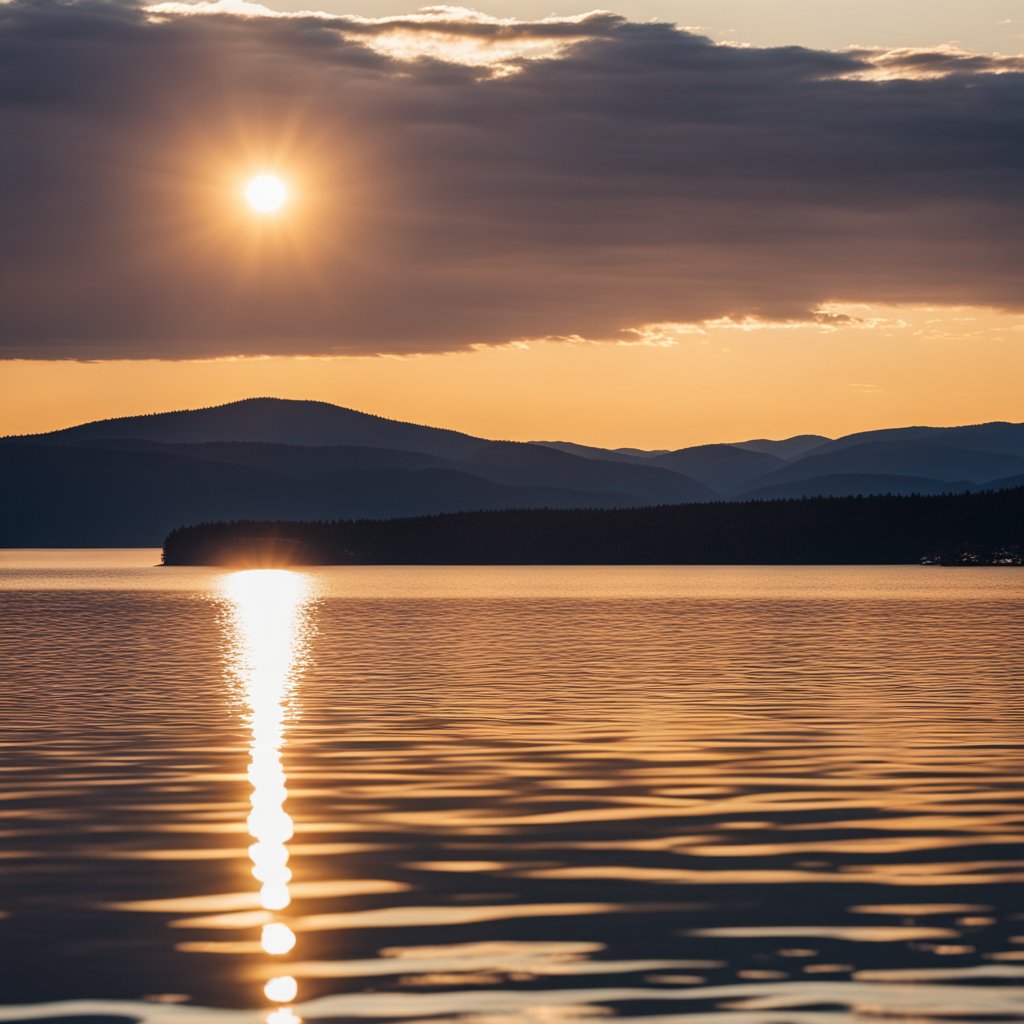
Hey, water enthusiast!
Have you heard about Lake Winnipesaukee in New Hampshire?
It’s a real gem for swimmers looking for a challenge.
Imagine diving into the coldest waters in New England for a cross-lake race.
Yes, it can be quite brisk, but it’s all part of the fun, right?
Stretching over 21 miles in length and with a shoreline that spans roughly 200 miles, this lake is the largest in New Hampshire.
And guess what?
It’s not just lengthy; it’s surrounded by eight picturesque towns, offering scenic views as you churn through the waters.
Now, picture this: you’re in the middle of the lake, the water is clear, and the conditions are totally unpredictable.
It's like Mother Nature's own obstacle course!
You might experience a sunny morning, but by the time you reach the midpoint, a mist rolls in, making navigation as exciting as your last escape room adventure.
Here's a fun fact — the lake boasts about 240 islands.
That’s quite the number of markers to keep you company along your aquatic marathon!
What's truly challenging, besides the distance and the invigorating water temperatures, is dealing with the variable weather.
This can turn your endurance swim into an epic tale of 'Man vs.
Wild', sans the TV crew.
So, do you fancy a test of your swimming fortitude?
Lake Winnipesaukee is calling your name!
Just remember to respect the lake's size and conditions; prepare well, and stay safe.
Are you ready to make some waves?
Lake Powell (Arizona/Utah)
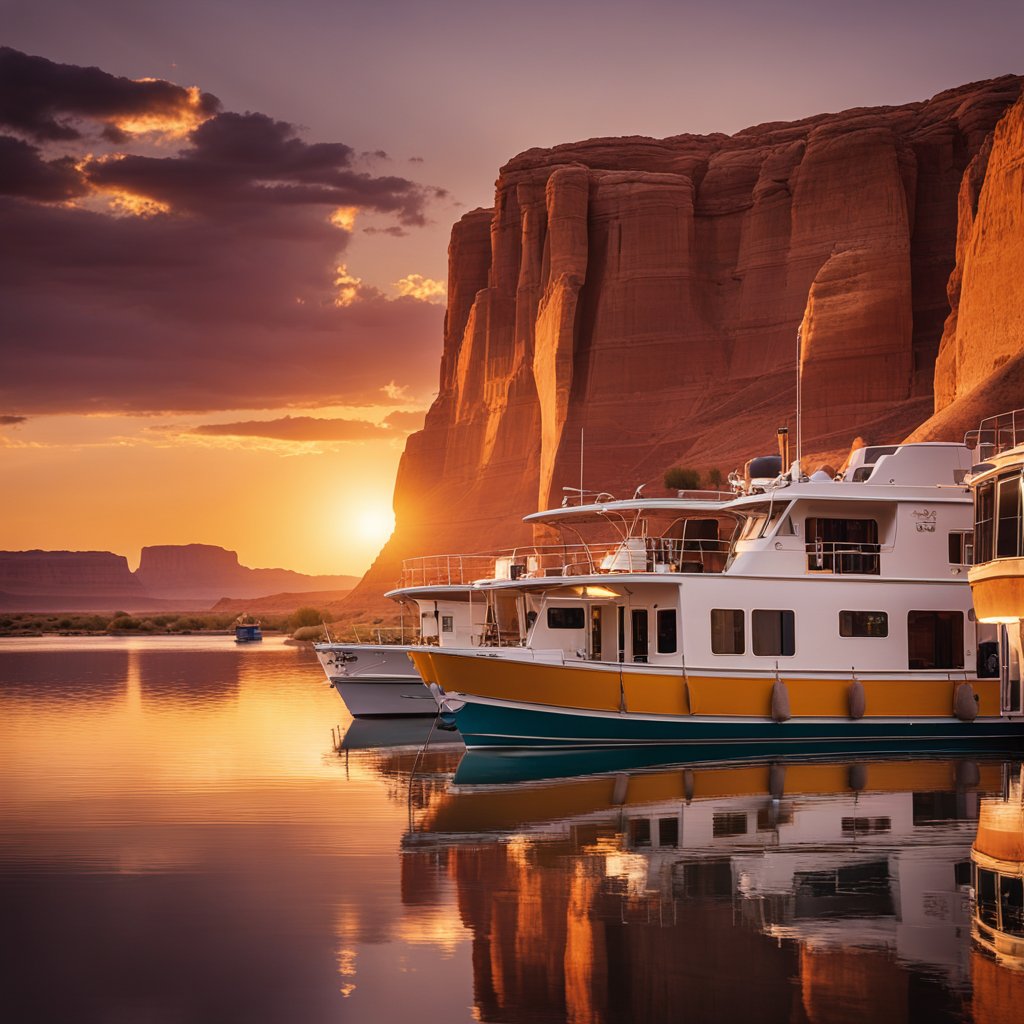
Have you ever considered the thrill of swimming across a lake with the warm sun overhead and breathtaking canyons around you?
Lake Powell, a massive reservoir on the Colorado River, straddling the border between Arizona and Utah, offers just that—but it doesn't come without its challenges.
Spanning over 186 miles in length and boasting over 2,000 miles of shoreline, the sheer scale of Lake Powell makes it a bucket-list destination for cross-lake swimmers like you.
Temperatures, Currents, and Winds, Oh My!
When you take on Lake Powell, you're not just tackling distance.
The water can be warm, which is nice, right?
But it also means you need to be prepared for long hours under the sun.
Plus, be mindful of the potential for strong winds and unpredictable currents that can add a splash of excitement, or maybe an unanticipated detour, to your swim.
Champion the Challenge
Distance: 186 miles
Shoreline: Over 2,000 miles
Temperatures: Warm and sunny
Navigating the Remote Canyons Imagine swimming alongside towering cliffs and remote canyons—pretty awesome, isn't it?
Yet, those secluded spots mean you’ve got to be extra cautious about planning.
Ensuring you have the right support and emergency measures in place is crucial, as help can be quite a paddle away.
Plan Like a Pro
Double-check your route
Arrange support boats
Stay hydrated and slap on that SPF!
So, are you ready to experience the exhilarating challenge of Lake Powell's cross-lake swimming race?
Remember, it's more than a test of endurance; it's an adventure set in one of nature's most incredible landscapes.
Don't forget your camera—those canyon views are worth capturing, as long as it doesn't slow down your stroke!
Stay safe, and happy swimming!
Flathead Lake (Montana)

Have you heard about Flathead Lake in Montana?
It's not just another lake; it's a phenomenon for swimmers who crave a mix of beauty and challenge.
Fancy a dip in one of the clearest lakes around?
This is your spot.
Key Aspects of Flathead Lake:
- Natural Freshwater Lake: One of the largest in the western U.S.
- Size: Spanning over 122,560 acres.
- Depth: Average of 164.7 feet with some areas dipping to 370.7 feet!
- Accessibility: A favorite among locals and tourists for swimming.
Flathead Lake stands out for its sheer magnitude but don't be deceived; its placid beauty belies the tests it has in store for swimmers.
The waters here are not only exceptional in clarity thanks to meticulous monitoring, but they're also nippy, presenting an invigorating challenge.
Now, are you up for a race?
Picture this: you're in the water, the shoreline is a distant dream, and you're contending not just with distance but with the lake's infamous winds and waves.
It's a thrilling journey from shore to shore!
You won't be alone, though—the Flathead Lake swim community is robust and welcoming.
And for those calmer moments, Wild Horse Island on the west shore is a serene day-trip must-see.
Remember, swimming across Flathead Lake isn't just about endurance; it's about embracing the rugged nature of Montana's waters.
So, are you ready to take the plunge and add your name to the list of bold swimmers who have conquered its expanses?


